MARKET OVERVIEW
The Global Aesthetics market has since become a major factor in the beauty and healthcare arena, expanding to cover various sectors: skincare, cosmetic surgery, non-invasive procedures, and novel treatments. Consumer desires for self-image improvement and technological advances will be the forces driving this market, continuing to chart a course toward the future of beauty and personal care. With a rapidly growing interest in personalization of beauty treatments, people are opting not only for the traditional means of beautifying their appearances. Instead, with fewer invasions, more personalized options for skincare are coming on-stream, presenting a more open and diverse accessibility in aesthetics terms; thus, a foothold from which mass consumer buy-in can happen is thus created.
As such, a marked trend within the Global Aesthetics market will be non-invasive and minimally invasive treatments gaining increasing popularity. Surgical procedures that require longer recoveries and/or give results slowly have been predominant, but these are slowly being taken over by quick recovery options. These include botulinum toxins, dermal fillers, and laser treatments for eminently visible but minimally disruptive results to everyday life. With enhanced convenience and limited risks offered, patients will be more inclined to use them and will form a strong foundation for how people will view cosmetic treatments into the future.
Digital innovation will continue to be a major force within this industry. The incorporation of AI and augmented reality will completely change the consultation experience, allowing a patient to visualize expected results prior to initiating treatment. This technological evolution will improve not only the experience of patients but also their providers' abilities to deliver more precise and efficient treatment options. As the digital tools get a higher level of sophistication, they will facilitate the crafting of tailor-made treatments away from a one-size-fits-all setup to custom-designed regimens that suit individual needs and preferences.
On the target, in the future, the access of aesthetics will expand with very inclusivity, allowing people of various backgrounds and income levels to indulge. Many novel technologies and treatments will come to be cheaper, thus lowering the barricade that had previously put off certain demographics from coming into the market. The rise of cheaper at-home treatments, such as skincare devices and serums with medical-grade ingredients, will allow individuals to have the upper hand in fulfilling their own aesthetic needs without being subject to having to come into a clinic. Such innovations will democratize the nature of the whole beauty business, hence accommodating more solutions across a varying number of skin types, skin concerns, and budgetary allowances.
There will be a further emphasis on wellness and holistic beauty within Global Aesthetics in the future. The demand from consumers will generate products and services that improve beauty and enhance well-being. This will create a greater demand for treatments that promote skin health, mental wellness, and sustainable aesthetics. This will, in turn, come to push brands to look into ways of fusing aesthetics with health-conscious and green offerings that will resonate with this more aware consumer base.
As society continues to restructure its views towards aging and beauty, the Global Aesthetics market will metamorphose into duly, a space within which all persons of age would find possible solutions suited to their varying unique needs. This contingent gives larger consideration of empowerment and self-expression, subsequently converting a rather more inclusive and diverse market: one that more acutely reflects the dynamic shifts in consumer behavior. Therefore, the Global Aesthetics market will undergo drastic changes; new treatment methods personalized solutions, and well-being as a core value will be what really characterize the industry in the unfolding years.
Global Aesthetics market is estimated to reach $231,986.97 Million by 2032; growing at a CAGR of 13.3% from 2025 to 2032.
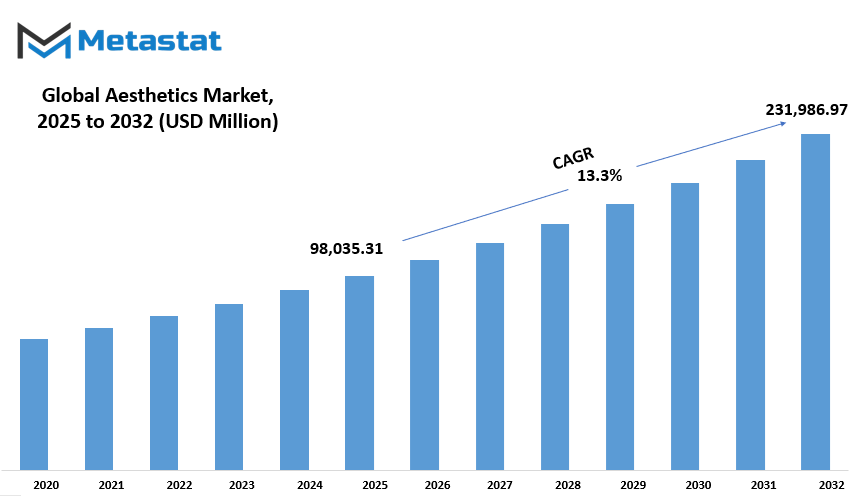
GROWTH FACTORS
In terms of its global features, the aesthetics market grew significantly from the past years, largely due to a preference for attractive products among consumers. It is amusing to note, for instance, that in fashion, home décor, and technology, among others, design is marketing in itself, which makes it appealing to buyers. Consumers want products that serve their purposes as well as look beautiful; hence, manufacturers are inclined more toward producing eye-catching items and satisfy consumers' behavioral trends toward their products.
The influence of social media and digital platforms has further fueled the increasing demand for these attractive products. Leading platforms that showcase everything new and beautiful in design and style, such as Instagram, Pinterest, and TikTok, have discouraged consumers from believing they are up to trend. These spaces allow users to find and show their aesthetic choices, thus increasing their desire for the aestheticized products. All this makes people realize that aesthetics now form part of the marketing strategies for their brands.
However, a few major challenges stand against the market. One of the most important causes is an issue concerning the subjectivity of aesthetic values, including tastes, which differ and may vary widely from one person to another. This makes it increasingly difficult for industries in this market to devise product platforms that may reach a mass audience. In addition, income levels significantly determine affordability for aesthetically pleasing products. For some, the kind of design would be good enough to draw higher prices, but the thresholds of affordability might hamper growth across many segments of the lower-income markets.
The future seems bright for the industry, especially when spearheaded by the advancement in AI and digital tools. With the new age of AI technologies and digital platforms, personalized and customizable aesthetic experiences are now afforded to consumers. Consumers will ever want, with continued modernity, that designs be tailored with individual tastes, whether in fashion, home décor, or technology. The rise of unique, one-of-a-kind products tailored for individuals will create a market that drives the whole economy in terms of future growth. As personalization in aesthetics rises, so will the need for investments in these technologies to remain competitive and meet customer expectations.
Thus, the global aesthetics market is primarily driven by consumer demand for attractive products and the rising influence of social media. Although there are several challenges, including subjective preferences and high production costs, developments in AI and digital tools offer significant promise for the future. As technology progresses, the market is likely to grow and offer more personalized and customized aesthetic experiences.
MARKET SEGMENTATION
Product Type
The worldwide market of aesthetics is witnessing a rapid growth phase, mainly due to the increasing demand for non-invasive cosmetics. This market fulfills diverse needs and preferences with its multitudes of products and technologies. Rhinoplasty-a procedure performed to correct or enhance the nose for cosmetic or medical reasons-represented one of the largest populations of products in this market. Segmentation associated with rhinoplasty is expected to generate a significant value of approximately $13,937.17 million, establishing a substantial position in the overall aesthetics industry.
The market includes various aesthetic devices to augment beauty and treat skin concerns in addition to rhinoplasty. It is here that laser aesthetic apparatus form a major part of their sectorial activities, playing roles in skin rejuvenation, hair removal, and acne treatment. These target the skin using focused light and provide enhanced skin clarity and smoothness with little recovery downtime. Another major category is represented by radiofrequency (RF) devices, inducing collagen production to tighten skin. It has gained traction as an easy non-invasive technology that allows us to see results with slight discomfort.
Ultrasound devices make inroads in the aesthetics business. The purpose of these devices is to use sound energy to penetrate the skin and stimulate tissue regeneration. Ultrasound is used for a lot of the facial treatments, targeting areas in need of improvement in texture, tone, and elasticity. Cryolipolysis devices, which literally mean killing fat cells by freezing them so that the lives of these fatty cells are shortened, are some of the big players in the aesthetics market. These devices have major applications in nonsurgical fat reduction and body contouring, making them popular among people wanting to shape their bodies without surgery.
The aesthetics market also comprises other innovative devices and treatment applications according to specific needs and preferences. Such could include high-intensity focused ultrasound (HIFU) for skin lifting and tightening, or microdermabrasion devices used for exfoliating the skin and dead cells. As the beauty and wellness markets continue to flourish, the global aesthetics market will witness another phase of innovation and advancement, with increasing popularity for non-invasive procedures due to ease, efficacy, and fast recovery from downtime.
The diversified product range in the aesthetics market is evidently showing a trend toward solutions that are primarily non-invasive or minimally invasive and allow the consumer to choose almost anything with minimum risk for aesthetic enhancement.
By Demographics
Although a volatile environment seems to underlie the rapid growth of the global aesthetics market, the increasing demand for beauty and skincare products, as well as treatment and procedures, remains its foremost growth-driving factor. This market may, therefore, be classified as being quite segmented, with demographic factors clearly influencing its structure. Looking into the segmentation of this market, we can then classify it primarily by key demographic segments: male and female. Both these segments possess particular preferences and needs that will differentially affect the products and services being pursued.
The female segment has, in the past few years, been the prime mover of the global aesthetics market. From cosmetics to anti-aging treatments, women are the largest consumers of beauty and skincare products. The mention of "demand" here is traced to pride in looking younger, enhancing self-esteem, and perhaps adhering to prevailing beauty standards. Besides traditional beauty products, women increasingly seek outpatient improvement procedures like Botox treatments, dermal fillers, and laser treatment--but not surgical ones.
Nonetheless, some very dynamic changes are occurring in the aesthetics market for male demographics. Men are becoming more conscious of their appearance, and they are adopting skincare routines and cosmetic treatments. There is a psychological change brought about by changing social norms and a growing acceptance of grooming and self-care behaviors among men. Certainly, men have not traditionally shown as much interest in beauty treatments as women, but this budding interest has created new market opportunities. An increasing number of men are choosing treatments, such as Botox to deal with wrinkles as well as hair restoration and laser skin treatments.
In conclusion, the divide between male and female consumers in the aesthetics market shows that while women are still the primary drivers, men are steadily increasing their share of the market. The shift in demographic values is aiding companies developing products and services to focus on this emerging male population. Advertising increasingly targets male and female customers with tailored brands, ensuring that products satisfy the wants and expectations of each group.
The upside is that demand for aesthetics products and services, clearly, is no longer a one-gender affair. Men and women are spending on beauty and self-care in uniquely diverse ways, creating an equally heterogeneous market filled with opportunities for brands to explore. Gender segmentation allows firms to hone in on those unique preferences per demographic and keep themselves in the running in this booming industry.
By Procedure Type
The global market for aesthetics is continuing to evolve all the time. There is serious interest in minimally invasive as well as surgical procedures. The demand for aesthetic treatments has soared as people have started becoming conscious about how they look and ways of enhancing the features they have, or of slowing down the process of aging. Procedures are generally classified into two categories under a broader aesthetics market-these are minimally invasive and surgical procedures.
A minimally invasive procedure is a lifestyle management or non-surgical alteration that usually cuts very little into a person's normal life, unlike surgical procedures that usually have more downtime. Just about everyone who undergoes such procedures-and there are a few such- exercises very little of an involved schedule or complaint because of possible discomfort. These procedures are most mostly related to Botox, fillers, chemical peels, and lasers. In addition, they are fast, local anesthetic, or no anesthesia-broadly yielding results in minimum discomfort. Most of these treatments do not entail long recovery times, which is one of the main reasons for most people's choosing such procedures. They become even more popular as they are affordable and accessible while meeting the convenience requirement for busy people.
Whereas, surgical procedures are characterized by invasive procedures that usually multiply their downtime. This treatment would be usually classified under general anesthesia and would be discharged or admitted after a training professional carried out the procedure in a surgery procedure place. In general, surgical aesthetics treatments are more permanent and afford clinical convenience to a larger spectrum of aestheticists. Some of the most recognized surgical procedures include facelifts, rhinoplasty, breast augmentation, and liposuction.
Though these treatments can very easily produce quite dramatic and long-enduring results, they have multiple risks and undertaking processes plus lead to a premium price tag. But even with that, surgical magic continues to be very much in demand as they create more substantial and long-lasting changes in a person's appearance-more often than not, changes that prove to be life-altering.
Thus, it can be seen that this is a growing market for aesthetics globally since it serves the need for procedures intended at improving looks, making one more confident, and addressing changes brought about by age. These would include minimally invasive as well as surgical procedures because, with the variety they come with, both could satisfy one's needs and wants. Such procedures would range from fast, effective, and efficient procedures with little downtime to more permanent and dramatic changes. Future technology and innovations in technique will likely continue to improve both types of procedures as the market expands, making many more options available to choose from to get the desirable look.
By End-User
Aesthetics globally has been growing as a potential market driven by the increasing demand for cosmetic treatments and beauty-related services in most sectors. This market is defined on the basis of end users availing aesthetic services, such as dermatology clinics, cosmetic surgery centers, spas and wellness centers, hospitals, and home care.
They are clinics dealing with the skin and are one of the major contributors in the aesthetics market by providing care in the form of non-invasive and minimally invasive procedures for skin health and appearance. Services most clinics provide are procedures like Botox injections, laser treatments, and chemical peels which are focused on skin problems like wrinkles, acne, and pigmentation. As a result of increased demand for incision-free options for facial enhancement, these treatments have gained popularity.
Some of the factors that make these centers vital in the aesthetics market are in-house procedures like facelifts, rhinoplasties, and liposuction. They are much more invasive and deliver quite a paradigm-shifting and long-lasting impact. These treatments, while their recovery time may be long, appeal greatly to patients wishing to solve bigger permanent issues. The increasing popularity of cosmetic surgeries can be attributed to the growing importance placed upon a person's appearance in society and the acceptance of plastic surgery as part of normal healthcare in aesthetics.
Spas and wellness centers are another segment of the world's market in aesthetics. Typical service offerings consist of facials, body treatments, and relaxing therapies that customers receive for purposes of improving their health and appearance. The reason spas and wellness centers are highly regarded by most people is that they combine beauty treatments with relaxing treatments, making them a common choice for people who want to rejuvenate but also want a pretty look.
Hospitals are quite notable in maximizing aesthetics services, but mainly, they are the hospitals where treatment of diseases and ailments happens. However, they do serve patients with special programs targeted at aesthetic enhancement, such as reconstructive surgery or advanced skin treatments to remedy scarring due to burns or anatomical deformities. Patients usually seek restoration of their original state after medical procedures or injuries.
Home care has also extended its horizons owing to the increase in at-home beauty tools and skin products. People are now looking for ways to maintain personal appearances while at home using anti-aging creams, facial devices, and laser equipment used at home. Home care is now a common alternative for many consumers due to the convenience it offers and its low price.
Put simply, the global aesthetic market is huge and has various segments for diversified end-users who cover a broad spectrum of treatments they desire to make them look appealing and feel good. Each segment-from dermatology clinics to home care-has a key role to play towards the industry's growth in providing accessible beauty solutions to individuals worldwide.
|
Forecast Period |
2025-2032 |
|
Market Size in 2025 |
$98,035.31 million |
|
Market Size by 2032 |
$231,986.97 Million |
|
Growth Rate from 2024 to 2031 |
13.3% |
|
Base Year |
2024 |
|
Regions Covered |
North America, Europe, Asia-Pacific, South America, Middle East & Africa |
REGIONAL ANALYSIS
The global aesthetics market has therefore been divided geographically into various regions, each representing a distinct set of characteristics and opportunities. These include North America, Europe, Asia-Pacific, South America, and the Middle East & Africa. North America is further subdivided into the United States, Canada, and Mexico; these countries contribute to the overall aesthetics market in their respective ways. In Europe, however, we have countries such as the United Kingdom, Germany, France, Italy, and some parts of Europe, which are grouped under the category "rest of Europe."
Asia-Pacific, being characterized by varied and rapidly growing economies, is further subdivided into major countries, including India, China, Japan, South Korea, etc., along with the remaining few countries that make up "rest of Asia-Pacific." The demand for aesthetic services and products in these nations is driven by increasing disposable income levels, an increasing focus on self-care, and an increasing interest in beauty and treatment procedures. Countries forming the South American market are Brazil, Argentina, and some other countries grouped under "rest of South America." Brazil represents the largest market in the region and is seeing increasing investments in treatment modalities and aesthetics as a product.
Middle East & Africa is the next region comprising the GCC countries, Egypt, South Africa, and then the rest of the region, with smaller countries often holding unique consumer needs. The GCC countries, including Saudi Arabia, the UAE, and Qatar, see high demand for luxury beauty and aesthetic products. Egypt and South Africa are also considered important markets as increasing interest in aesthetic services is noted as disposable incomes rise with urbanization.
Each of these regions thus has its own set of trends, market dynamics, and growth opportunities. The global Aesthetics market is anticipated to have continued expansion due to innovation, enhanced awareness of beauty treatments, and building consumer confidence in aesthetic procedures. With economic development and improvement of living standards, the demand for aesthetic treatments is poised to increase in these regions, making this market highly competitive and heterogeneous. The regional breakdown creates avenues for businesses and investors to identify growth opportunities and appropriately customize their strategies to meet the peculiarities in each market segment.
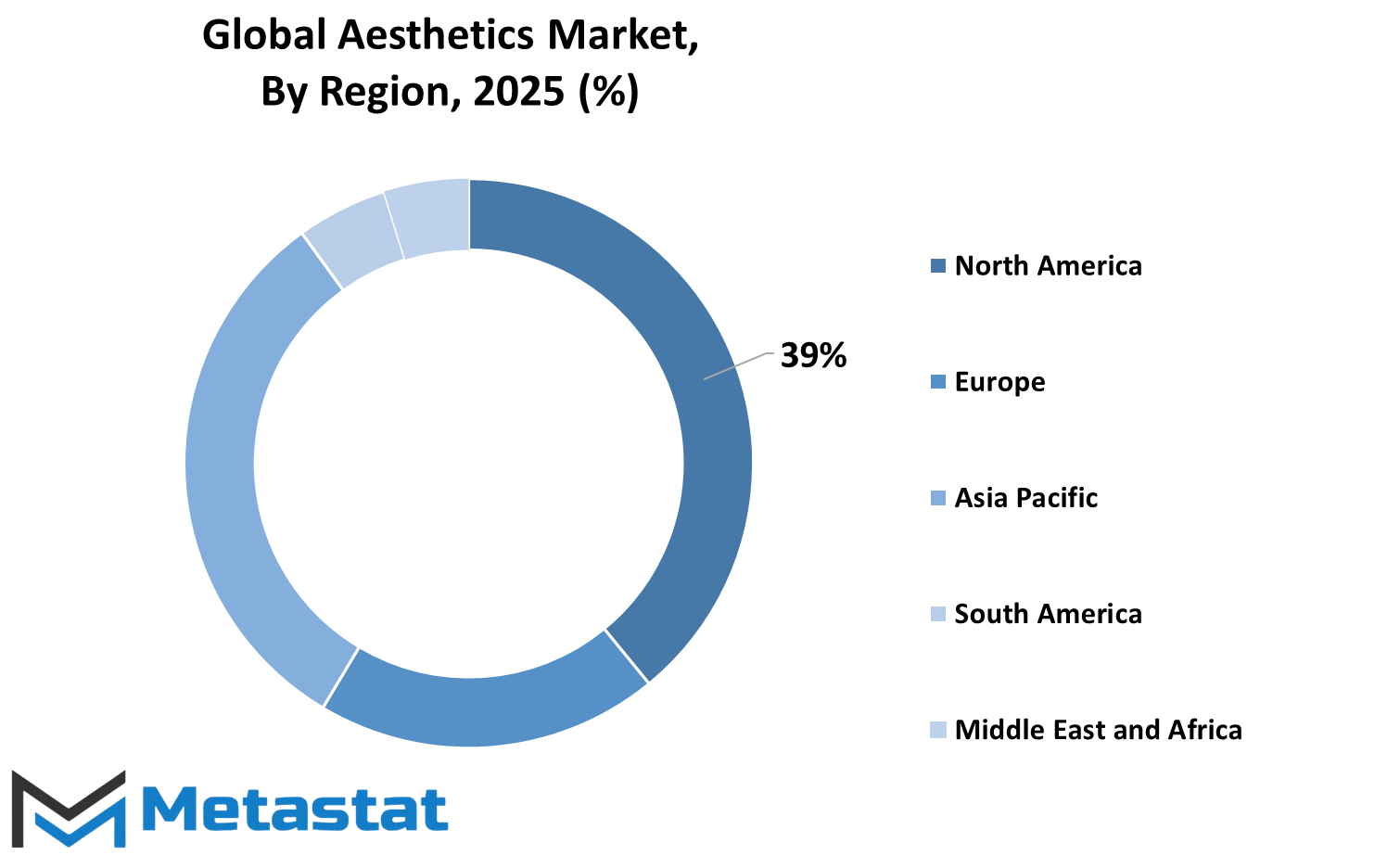
COMPETITIVE PLAYERS
During the past few years, worldwide aesthetics market has witnessed impressive growth, largely as a consequence of increased demand for cosmetic procedures and therapies. A variety of factors are contributing to the emergence of this boon, as well as the rising popularity of minimally invasive interventions, along with an increased focus on self-care. The introduction of new technologies and products makes the aesthetics industry more diverse and accessible than ever before to a wider population.
Huge players in the aesthetics industry are playing prominent roles in shaping the market structure and future developments. Companies like Allergan, Galderma and Merz Pharmaceuticals are leading the front in innovative solutions to address the consumer demands. These companies cover a wide spectrum of aesthetic products within the field of injectables, dermal fillers, skin rejuvenation devices and laser treatments.
Other important players in the field include Revance Therapeutics, Inc. and Hologic, Inc. They focus on technologies that are on the cutting edge and edge more towards offering what may be described as non-invasive treatments of subtle aesthetic improvements, which will most surprise appeal to customers' needs. As well, Lumenis Ltd. and Syneron Candela offer advanced devices in aesthetics and for medical purposes allowing people to achieve smoother skin and a more youthful appearance.
Another major player in the industry is Cynosure, Inc., which is a heavyweight in a wide range of light-based aesthetic devices. These products target many types of skin problems such as wrinkle reduction, hair removal, and skin tightening. Bausch Health Companies Inc., Cutera, Inc., and Venus Concept have also made their mark in the market by developing devices and solutions meant to cater to the needs of both medical professionals and consumers.
Strata Skin Sciences, Aesthetic Group, and Mesoestetic provide such highly specialized services and products surrounding skin health and enhancement that their demands will continue to be in high demand now more than ever when people are being more and more educated about skin care. Last but not least, BTL Industries has enlarged its offering scope by bringing advanced body contouring and skin treatment technologies which gained considerable ground in the aesthetics market.
These companies constantly set trends and drive innovation in the aesthetics sector. As demand for non-invasive treatments continues to grow, these players will remain at the forefront, shaping the industry's future and its continued evolution.
Aesthetics Market Key Segments:
By Product Type
- Rhinoplasty
- Laser Aesthetic Devices
- Radiofrequency (RF) Devices
- Ultrasound Devices
- Cryolipolysis Devices
- Other
By Demographics
- Male
- Female
By Procedure Type
- Minimally Invasive Procedures
- Surgical Procedures
By End-User
- Dermatology Clinics
- Cosmetic Surgery Centers
- Spas & Wellness Centers
- Hospitals
- Home Care
Key Global Aesthetics Industry Players
- Allergan, Inc.
- Galderma S.A.
- Merz Pharmaceuticals
- Revance Therapeutics, Inc.
- Hologic, Inc.
- Lumenis Ltd.
- Syneron Candela
- Cynosure, Inc.
- Bausch Health Companies Inc.
- Cutera, Inc.
- Venus Concept
- Strata Skin Sciences
- Aesthetic Group
- Mesoestetic
- BTL Industries
WHAT REPORT PROVIDES
- Full in-depth analysis of the parent Industry
- Important changes in market and its dynamics
- Segmentation details of the market
- Former, on-going, and projected market analysis in terms of volume and value
- Assessment of niche industry developments
- Market share analysis
- Key strategies of major players
- Emerging segments and regional growth potential



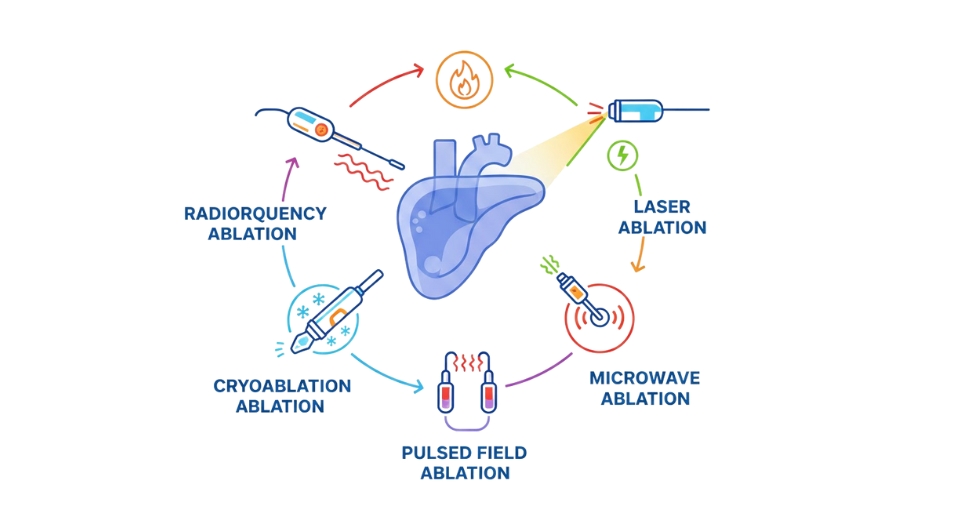

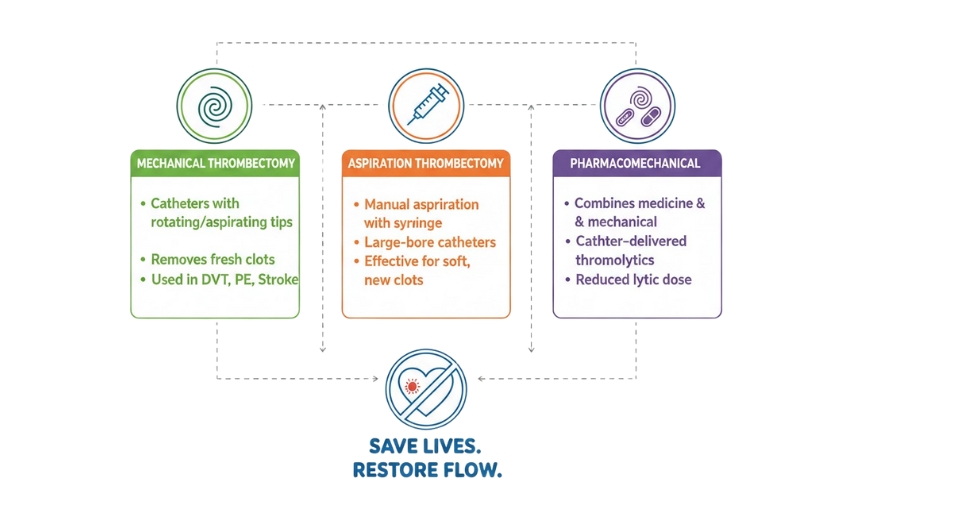
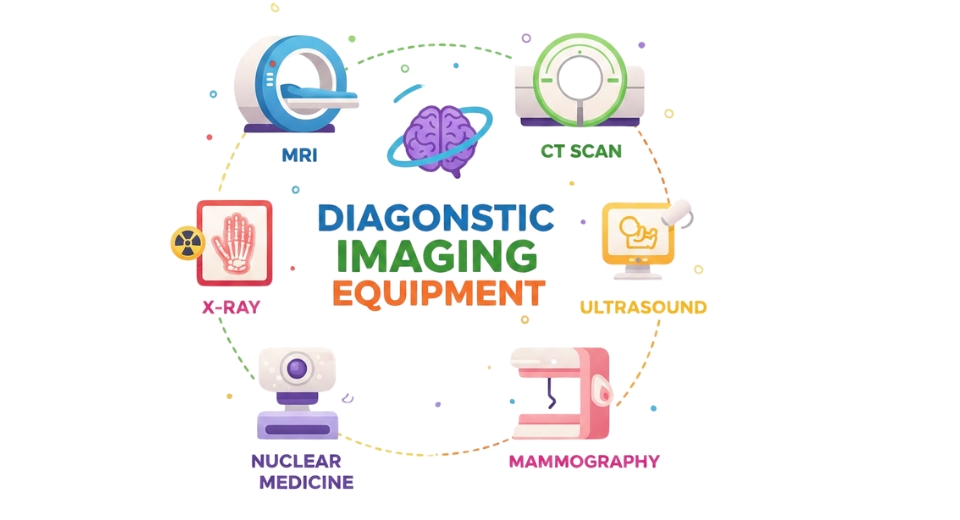

 US: +1 3023308252
US: +1 3023308252






